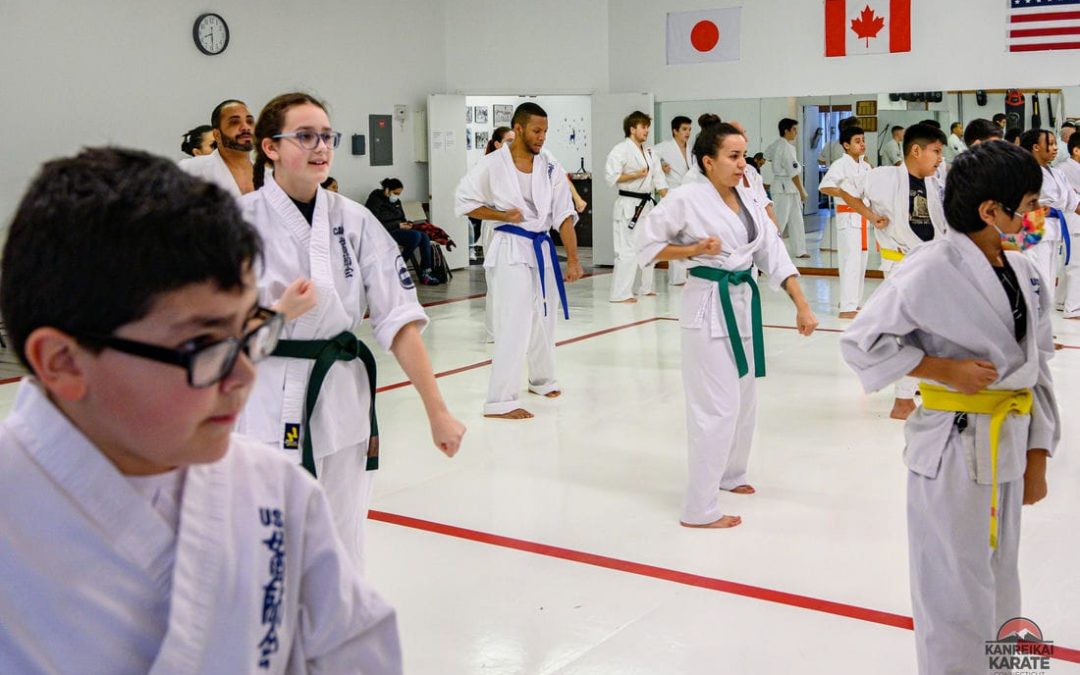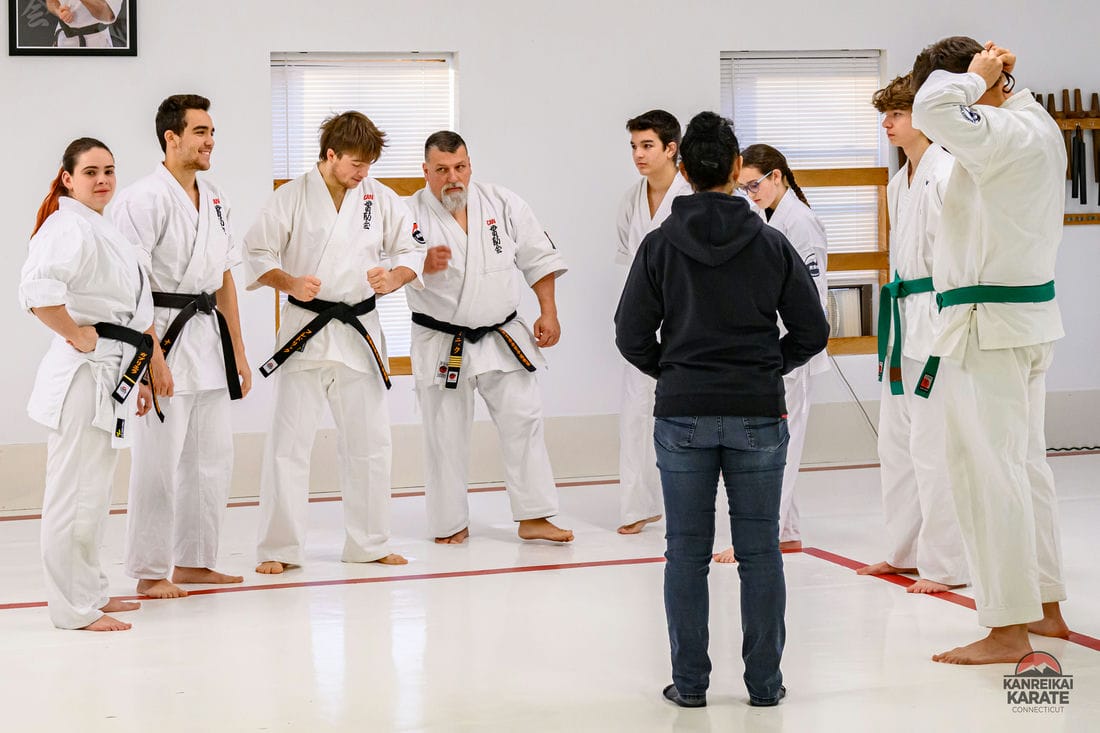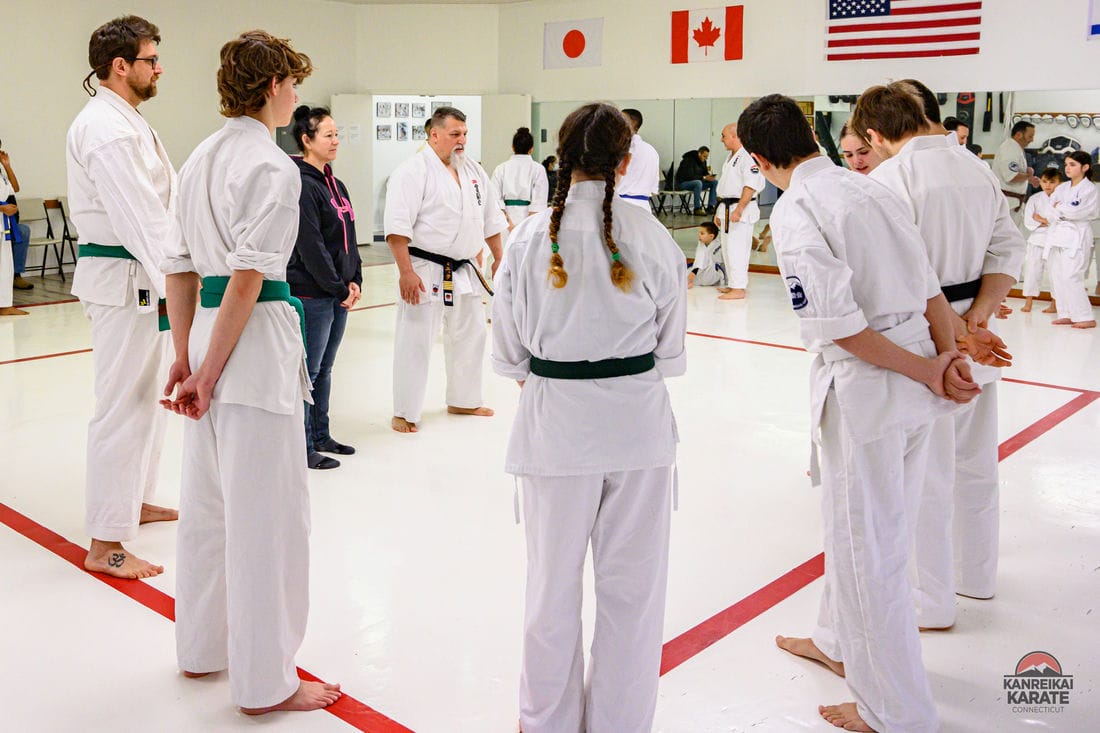Karate, with its origins in Okinawa, Japan, is one of the most widely practiced martial arts in the world today. An integral part of karate training is the ranking system denoted by different colored karate belts. But what do the different colored belts represent and why is the black belt considered the pinnacle? This article will provide a deep dive into the karate belt ranking system.
The colored belt ranking system used in karate today was introduced in the early 20th century to denote a student’s level of skill, knowledge and experience. The different colored belts provide milestones and motivation to karate students by recognizing advancement in their karate journey. They also indicate to others in the karate world the practitioner’s proficiency and mastery in the art of karate.
What Do the Different Colored Karate Belts Represent?
There are commonly nine different colored karate belts across different karate styles, ranging from the white belt for beginners to the black belt for advanced experts. The order of belts in karate, from lowest to highest, is typically:
- White belt
- Blue belt
- Yellow belt
- Orange belt
- Green belt
- Brown belt
- Black belt
However, there can be minor variations in the colored belt order depending on the particular style of karate.
White Belt
The white belt is always the first belt awarded to karate students who are just beginning their training. It symbolizes innocence and the start of the journey into karate. As the fundamental belt color, it represents the time for learning the basic karate skills and techniques without pretense.
Colored Belts
The colored belts – blue, yellow, orange, green, and brown – are known as kyu or graduation belts. They indicate the intermediate ranks as a student progresses through their karate training. Each colored belt represents a new level of proficiency as additional skills, katas, techniques and knowledge are acquired. The colored belts motivate students to keep improving as they work their way up through the ranks.
Black Belt
The black belt is the highest rank achievable for karate practitioners. It indicates an advanced expert level of discipline and mastery of karate skills and knowledge. It often takes dedicated students many years of training to reach black belt level. The black belt is further split into degrees called “dan”, indicated by stripes on the belt, to recognize additional levels of expertise and experience beyond first-degree black belt.
Why Is the Black Belt the Pinnacle Belt Color?
The black belt is universally recognized in martial arts circles as denoting an elite level of proficiency and mastery. But why is black singled out as the pinnacle color?
In traditional Japanese martial arts, black symbolized experience, spirit, and maturity. As such, it was deemed fitting for the highest rank of karate mastery.
Some legends trace the black belt back to mourning bands worn by martial arts practitioners in 19th century Japan. These black bands on the waist commemorated a student’s teacher upon their death. Over time, the mourning bands evolved into black belts to honor the highest level of skill and expertise.
Another theory is that original jūdō belts would fray and become stained over years of rigorous training. They would eventually turn black naturally, so black became associated with senior expertise.
Whatever its exact origins, the black belt’s symbolism of consummate skill and mastery has endured over time to make it the ultimate achievement and goal for karate practitioners worldwide.
How Long Does It Take to Earn a Black Belt?
There is no set timeframe for earning a black belt. Several factors affect the time it takes to progress through the belts:
- Training Frequency – Training just once or twice a week will take longer versus daily training.
- Natural Ability and Athleticism – Students with inherent talent and athleticism may advance quicker.
- Effort and Dedication – How hard a student works and how dedicated they are to learning and improving is key.
- Karate Style – Some styles have more rigorous requirements for each belt level.
On average, under dedicated training it takes about 4-6 years for a karate student to progress from white to black belt. Most schools require students to be at least 13 years old as well before attempting black belt grading.
After achieving the first-degree black belt, additional dan degrees and corresponding stripes on the belt take progressively more time – commonly several more years to reach each degree. The highest rank recognized today by the World Karate Federation is 10th dan.
A Rewarding Progression through the Ranks
The karate belt system provides students with short and long term goals to motivate their progression in the art of karate. Each new belt color represents milestones along the path as concrete recognition of the student’s increasing skills, strength, dedication, knowledge and commitment. Step by step, belt by belt, students are encouraged as they strive toward the ultimate goal – mastery represented by the coveted black belt.
Related article: Unearned Belt Promotions in Karate
Key Takeaways:
- Karate uses colored belts to denote ranking and progression from beginner to expert.
- The common order is: white, blue, yellow, orange, green, brown, and black.
- Each color represents greater knowledge and proficiency in karate.
- Black belt indicates the highest level of mastery and expertise.
- On average, it takes 4-6 years to progress from white to black belt.
- The belt system provides motivating short and long term goals for students.
Q: What is the Karate Belts Ranking System?
A: The Karate Belts Ranking System is a method used in martial arts, specifically karate, to signify the skill level and progression of a practitioner. It is a system that utilizes different colored belts to represent various ranks and levels of expertise.
Q: How does the Karate Belt Ranking System work?
A: The Karate Belt Ranking System works by assigning different colored belts to practitioners based on their skill level and proficiency in the art. As students progress and demonstrate their abilities, they are awarded higher belt ranks, indicating their advancement.
Q: What is the order of karate belt colors?
A: The order of karate belt colors may vary depending on the specific karate style or school, but generally it follows the progression of white, blue, yellow, orange, green, brown, and black.
Q: What do the different karate belt colors represent?
A: The different karate belt colors in the ranking system have symbolic meanings. For example, the white belt symbolizes the beginning or a novice level, while the black belt represents the highest level of mastery and expertise.
Q: How do you achieve a higher rank in karate?
A: To achieve a higher rank in karate, consistent training, dedication, and proficiency in karate techniques are required. Advancement through the belt ranks is typically determined by the instructor or governing karate organization. Tests are required for each promotion.
Q: Are there different karate styles that use the belt ranking system?
A: Yes, different karate styles use the belt ranking system, including popular styles like Kyokushin, Oyama, Shotokanand modern karate. While there may be some variations in the belt order and color schemes, the general concept of ranking through colored belts remains consistent.
Q: What is the significance of the black belt Dan?
A: The black belt Dan is the highest rank in the Karate Belt Ranking System. It represents a level of mastery and expertise in the art of karate, and often requires years of dedicated training and practice to achieve.
Q: How long does it take to get a black belt in karate?
A: The time it takes to earn a black belt in karate can vary greatly depending on factors such as the individual’s natural talent, commitment to training, and the specific requirements of the karate style or school. Generally, it can take several years of dedicated practice to achieve the black belt rank.
Q: Can anyone get a black belt in karate?
A: While anyone can technically work towards earning a black belt in karate, not everyone will achieve this rank. It requires a significant amount of time, effort, and dedication to reach the level of skill and proficiency required for a black belt.
Q: What is the purpose of the colored belt system in karate?
A: The colored belt system in karate serves multiple purposes. It provides a visual representation of a practitioner’s skill level and progress within the art. It also provides motivation and goal-setting opportunities for students as they work towards achieving higher ranks.
Q: How is a karate belt awarded to students?
A: Karate belts are typically awarded to students by their instructor or sensei. The awarding of a belt rank usually involves a test of the student’s skills, knowledge, and performance in various aspects of karate, kihon waza, katas, weapons, and sparring.
Authors:



